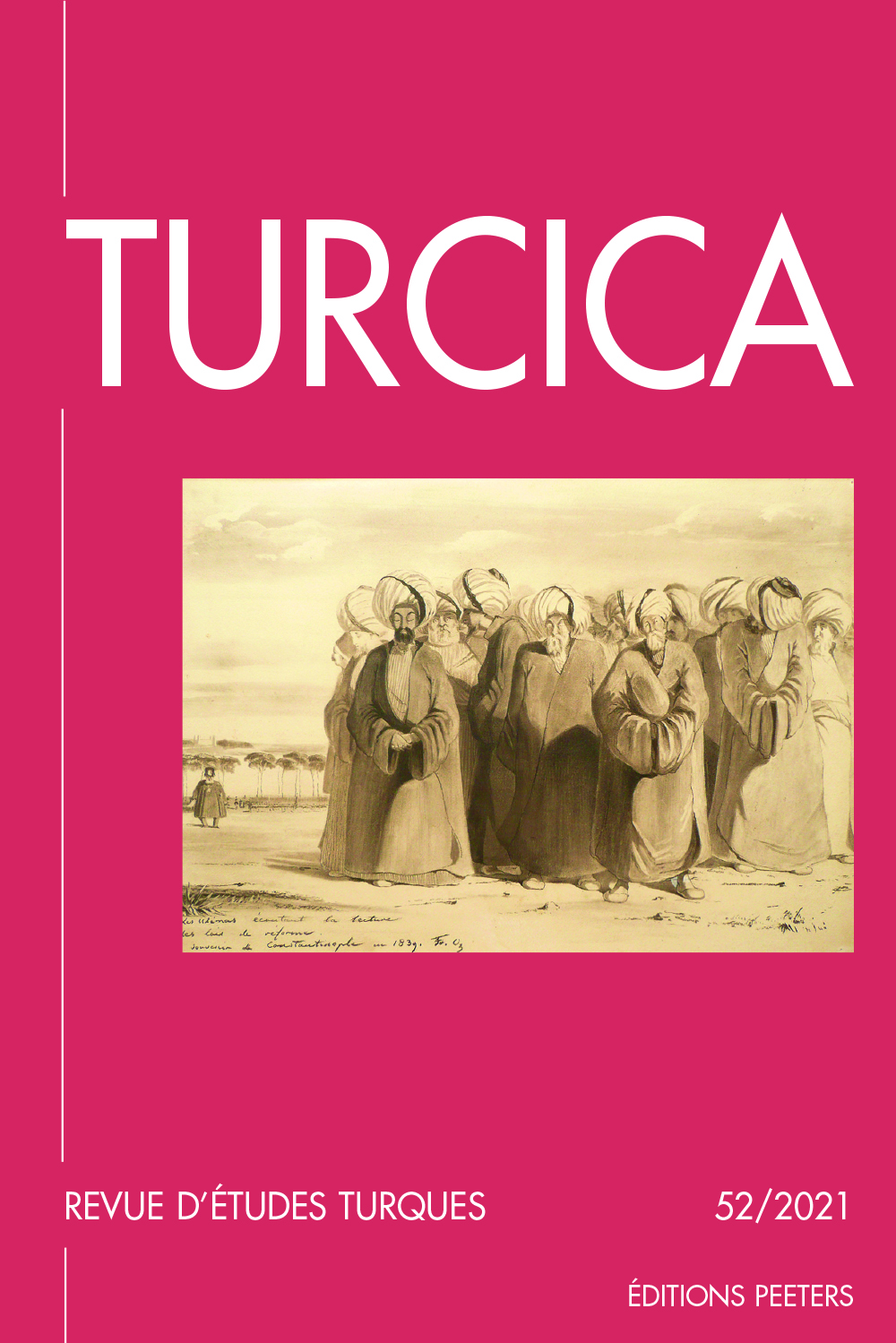 previous article in this issue previous article in this issue | next article in this issue  |

Preview first page |
Document Details : Title: How to Conceptualize Ottoman Sunnitization Subtitle: A Historiographical Discussion Author(s): TERZIOĞLU, Derin Journal: Turcica Volume: 44 Date: 2012-2013 Pages: 301-338 DOI: 10.2143/TURC.44.0.2988854 Abstract : Did Ottoman Sunnitization entail simply the adoption of an already crystallized Sunni confessional identity by the Ottoman ruling elites and their subjects? Or, can we also talk about a confessionalization of Sunnism in the Ottoman realms, comparable to the formation of distinctive Catholic, Lutheran and Calvinist confessions in early modern Europe? This article argues that Ottoman sunnitization did indeed entail new understandings and deployments of confessional identity as has been documented for early modern Europe; yet, this process was also a continuation of trends that had started earlier, in medieval and late medieval Islamdom. It is emphasized that while the religious culture of beylik Anatolia and the early Ottoman state was characterized by a good deal of 'confessional ambiguity' and flux, the transition from this state of religious fluidity to Sunni orthopraxy was more gradual than is usually assumed. Rather than being simply a politically-minded response to the rise of the Safavids and their adoption of Shiism, Ottoman sunnitization was also shaped by many other factors, among them the spread of literacy and the acculturation of the ruling elites of the lands of Rum into the norms and values of the learned elites of the Islamic heartlands, the consolidation of the Ottoman learned establishment as an integral part of the imperial apparatus, and last but not least, state-building and bureaucratization, which both created a need for and made it possible to impose a more homogenized understanding of Sunni Islam and Hanafi law. At the same time, this article also stresses the multiplicity of agents that contributed to Ottoman sunnitization and the points of tension and ambiguity that persisted throughout the process. La sunnitisation ottomane suppose-t-elle la simple adoption par les élites dirigeantes et leurs sujets d’une identité confessionnelle sunnite déjà cristallisée? Ou bien pouvons-nous parler aussi d’une confessionnalisation du sunnisme dans le monde ottoman, comparable à la formation, dans l’Europe de la première modernité, des confessions distinctes catholique, luthérienne et calviniste? Le présent article soutient que la sunnitisation ottomane supposa effectivement de nouvelles compréhensions et usages de l’identité confessionnelle, comme cela fut attesté en Occident; néanmoins, ce processus fut la suite de tendances préexistantes, remontant au monde musulman médiéval. L’attention est attirée sur le fait que, alors que dans la culture religieuse de l’Anatolie beylicale et du premier État ottoman l’ambigüité et le flux confessionnel n’étaient pas une exception, la transition de cet état de fluidité religieuse vers une orthopraxie sunnite fut plus progressif que ce que l’on a généralement supposé. Plutôt qu’une simple réaction politisée à la montée des Safavides et à leur adoption du chiisme, la sunnitisation ottomane fut également façonnée par plusieurs autres facteurs, dont l’alphabétisation et l’acculturation des élites dirigeantes des terres de Rum aux normes et valeurs des élites intellectuelles des bastions traditionnels musulmans, la consolidation de l’intelligentsia ottomane comme partie intégrale de l’appareil impérial, enfin et surtout, la construction de l’État et la bureaucratisation qui créèrent le besoin et les conditions d’imposer une compréhension plus homogénéisée de l’islam sunnite et de la loi hanafite. En parallèle, le présent article met également l’accent sur la multiplicité des facteurs qui contribuèrent à la sunnitisation ottomane et sur les points de tension et d’ambigüité tout au long de ce processus. |
 |


